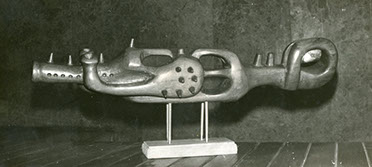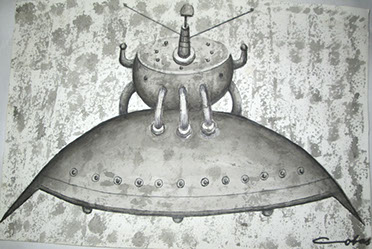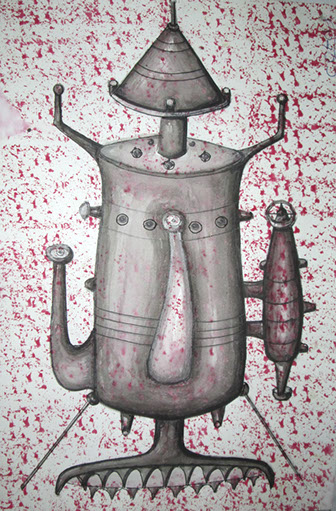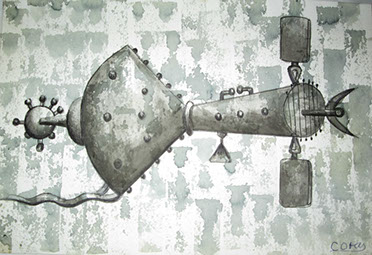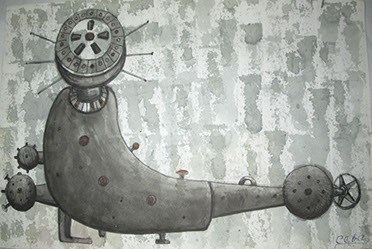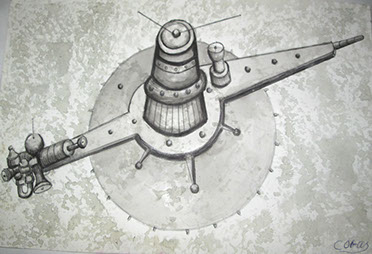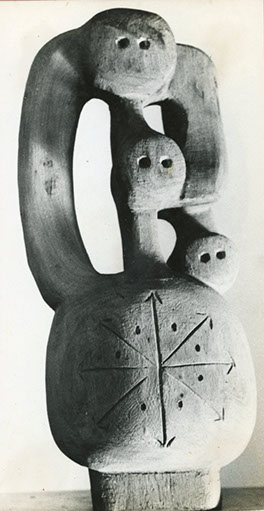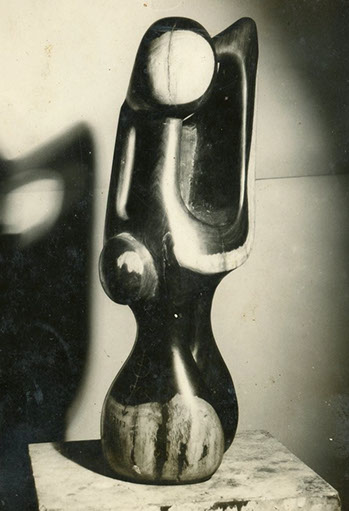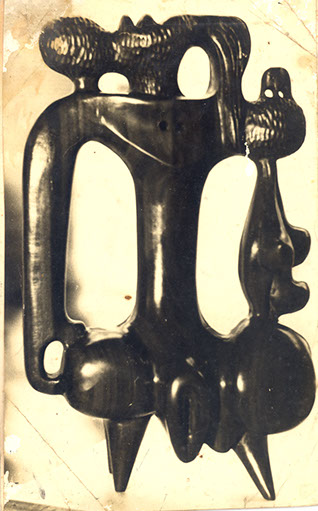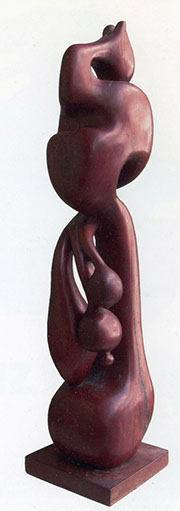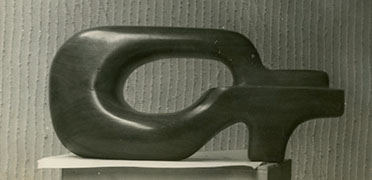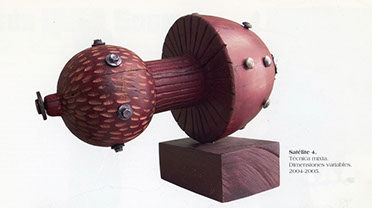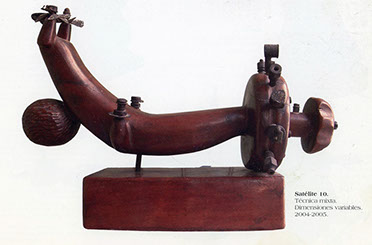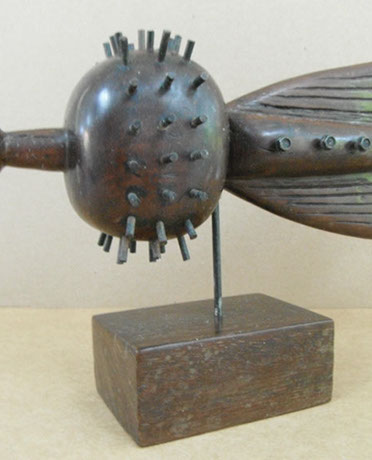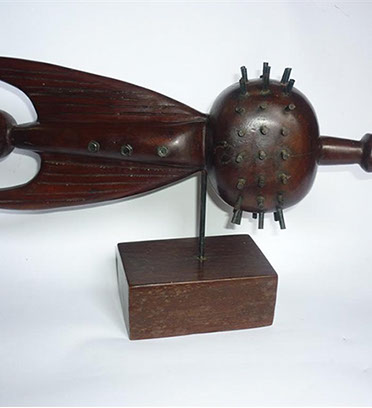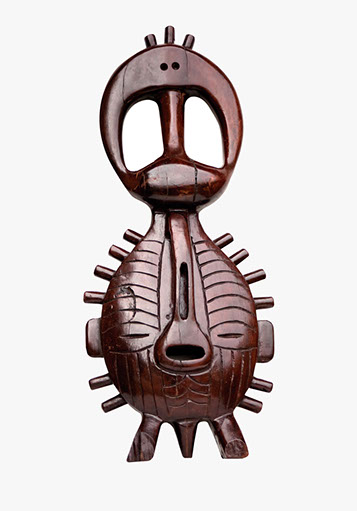ROGELIO RODRIGUEZ COBAS
“... of all the materials used in sculpture, I think wood is the best for my clearly Latin-African expressions. I believe that in the jungles, inhabited by my not-too-distant ancestors, the tree is the origin of everything that surrounds man... The only way I have to identify my art is motivated by my ethnic condition.”
Rogelio Rodríguez Cobas, 1981
“I try to transculturize the most important elements of our daily lives and in my art I try to find a truly Cuban meaning, which I transform into my universe.”
Rogelio Rodríguez Cobas, 1986
Cobas’s sculptures, wood assemblages with manufactured metallic pieces such as screws, pistons, and little wheels... go beyond their first mythical-religious meaning and the inherently erotic connotation of their shapes. They become machines without function but which convey a timeless warning: the indissoluble connection between human beings and nature and with their own bodies on the threshold of the era of robotics and digitization.
Pedro de Oraá, 2008
In Lino Betancourt’s last interview with Wifredo Lam, Lam stated that in the last few years Cuba had given rise to two great Africanist sculptors: Agustín Cárdenas and Cobas.
Walterio Carbonell, 1988
"...de todos los materiales que se utilizan en la escultura, considero que es la madera el más idóneo para mis expresiones netamente latinoafricanas. Considero que en las selvas, donde habitan mis antepasados no muy remotos, es el árbol la génesis de todo lo que rodea al hombre... El único camino que tengo para identificar mi arte está motivado por mis condiciones étnicas."
Rogelio Rodríguez Cobas, 1981
"Trato de transculturizar los elementos más importantes de nuestra vida cotidiana y busco un arte con un verdadero sentido cubano y lo transformo a mi universo"
Rogelio Rodríguez Cobas, 1986
La escultura de Cobas, maderas ensambladas con piezas metálicas de extracción fabril –tornillos, pistones, ruedecillas. . .- sobrepasan su primaria significación mito – religiosa y la inherente connotación erótica de sus formas, para entregarse como maquinarias carentes de función pero portadoras de un aviso sin caducidad: la indisoluble conexión de la criatura humana con la naturaleza y con la de su propio cuerpo en la entrada a la era de la robótica y la digitalización.
Pedro de Oraá, 2008
En la última entrevista que Lino Betancourt le hiciera Wifredo Lam, este afirmó que en los últimos años Cuba había dado dos grandes escultores africanistas: Agustín Cárdenas y Cobas.
Walterio Carbonell, 1988

